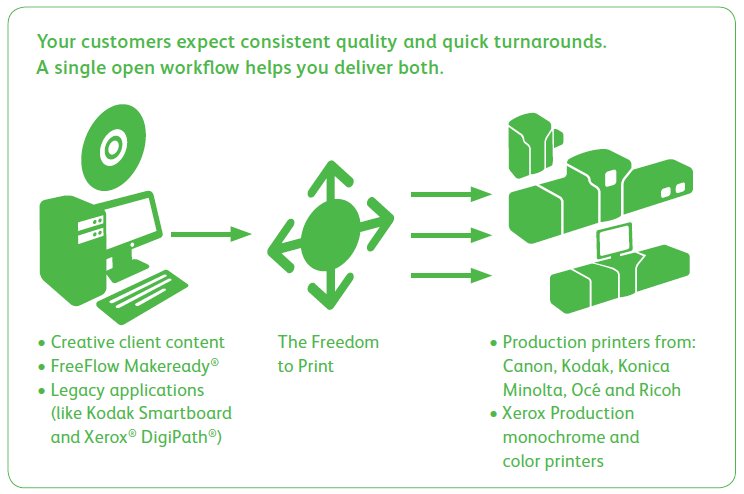Written by Howard Fenton
Senior Technology Consultant, NAPL
 There was an interesting question posted on one of the LinkedIn Forums recently. The question asked about the pros and cons for University in-plant printers who get the right of first refusal for the printing. Typically the right of first refusal for an inplant printer means that all the work goes to the inplant and they decide which work they will do, based on how busy they are and how their charges compare and decide if they’re going to do the work themselves or outsource the work.
There was an interesting question posted on one of the LinkedIn Forums recently. The question asked about the pros and cons for University in-plant printers who get the right of first refusal for the printing. Typically the right of first refusal for an inplant printer means that all the work goes to the inplant and they decide which work they will do, based on how busy they are and how their charges compare and decide if they’re going to do the work themselves or outsource the work.
I’ve sat down several times and written a response to this question and each time written a different answer. Why? While the question doesn’t seem complicated at first, if you have experience in the subject, you know that it can be complicated. At first blush, there is almost no downside to the right of first refusal because it increases the volume of work. And let’s be honest– more work can overshadow a host of financial issues.
But there are a few potential downsides. Although rare, sometimes a mandate to send all work can overwhelm the department. If that’s true you would have to take some quick action to try to avoid late deliveries or even the hint that you can’t keep up with demand. You need to immediately create an overflow strategy such as outsourcing until you can keep up. At the same time, you need to start researching new hardware / software, additional staff, or splitting shifts.
A second potential problem is the is resentment it can cause. It’s not always recognized but a mandate to send any kind to any specific supplier can create resentment. This is especially true when customers have long-standing relationships with outside vendors. These feelings of resentment can result in complaints about “losing the ability to competitively bid.”
Of course those specific words can be dangerous, because even a hint of uncompetitive pricing is a red flag for administration. That is why the leading inplants create a strategy to battle those claims.
This means creating a system to monitor competitive pricing. Different inplants used different strategies. Those that can afford it may invest in commercial bidding software such as P3 Software, while others who can’t afford it build their own.
At one of the University inplant peer groups I heard Abbas Badani from Penn State describe how he created his own bidding system. Abbas described how to program the system and years later I saw a version of that system at the University of North Carolina Chapel Hill.
The point however is that there are tremendous advantages associated with the right of first refusal, but there are some potential issues to watch for. First and foremost, you have to make sure that you can fulfill the demand. Second, you need to watch for possible resentment and build a strategy to overcome possible complaints about competitive pricing.
Can you think of anything else? Have you seen other pros and cons for inplants that get the right of first refusal?
Looking for similar topics? Check out these other Digital Printing Hotspot Blog posts:
- 5 Keys to On-Call Staffing Strategy
- Three Things In-plant Printers Must Do To Survive
- How the InterContinental Hotels Group Was Able to Cut through the Clutter
- The State of In-plant Printing
_____
Howie Fenton is a consultant and business advisor at NAPL as well as a paid contributor to this blog. Howie advises commercial printers and in-plants on benchmarking performance against industry leaders, increasing productivity, and adding digital and value services through customer research. For more information click here.



I have always found the term “right of first refusal” to be offensive. It sounds like an entitlement, and yes entitlements can and often do breed contempt. Especially in the Academy.
What we are really talking about is centralized print management. Colleges and universities typically have one IT guy, one administrator responsible for food services, one administrator responsible for facilities, for the budget, for admissions, et al. Why should print be any different?
In a centralized print management model the executive/administrator is charged with managing the institution’s entire print workflow, including the work done on the distributed MFD fleet, and providing the most cost effective work at the highest appropriate levels of quality to the entire campus. Her primary responsibility is to help her customers meet their organizational responsibilities. She must be able to use competitive buying strategies to complement her own production capabilities. She needs to understand and support the various and sometimes conflicting strategic goals of her customers. She needs to understand her competitive strengths and know how and when to leverage external resources. And she needs to document savings and “tell her story” to the campus.
Please. . . lets get away from “Right of First Refusal.”
Good points Ray. It makes perfect sense that the term the right of 1st refusal could be an offensive term. Unfortunately, I think it is burned into the in-plant vernacular like other overused expressions such as scotch tape. If there is another term that’s less offensive, I would certainly be supportive of it.
Howie:
I agree with Ray Chamber’s comments and would like to add two other thoughts about employing centralized print management at The University of Scranton and other smaller institutions.
We justify the acquisition of equipment and the employment of staff and provide more services at the inplant than we otherwise would if we didn’t pool the demand for services. We’re a shared resource, and we reduce the resentment factor by explaining ourselves that way. Requiring folks to acquire printing and related services centrally makes all their needs visible so that we can respond and then provide services on campus that match commercial quality but are faster and/or cheaper.
Other discussions of the topic have involved the notion that centralized eyes produce more consistent products, but our institution is also concerned about conducting a good business citizen. We use consistent, competitive, above board methods to acquire outside printing and maintain effective relationships with responsible vendors by insuring that everyone is treated fairly, communication is open and clear, contracts and schedules are followed, and payments are sent promptly. Our commercial partners also see the value of dealing with one office on campus.
By the way, Ray and I both use Central Print Management to describe what we do. If you also start using that instead of Right of First Refusal, maybe we can start making the change.
Thanks.
Ray Burd, Director
Printing and Mailing Services
The University of Scranton
Scranton, PA 18510
Ray.Burd@Scranton.edu
Good point. An in-plant manager can build a an inventory of equipment that meets more of the organization’s needs when s/he has better information about what is going off campus.
Ray,
I agree completely. Understanding what print and related services are sent off campus is important. On some assignments I survey the in-plants customers and ask them what portion of work they send to the in-plant and what portion do they send to commercial printers. This can be eye-opening when you find out that most people don’t know that you are offering a service such as large-format printing. And for those that are not offering that (much in demand) service this information can be used in the strategic planning process to identify new value-added opportunities for the in-plant.